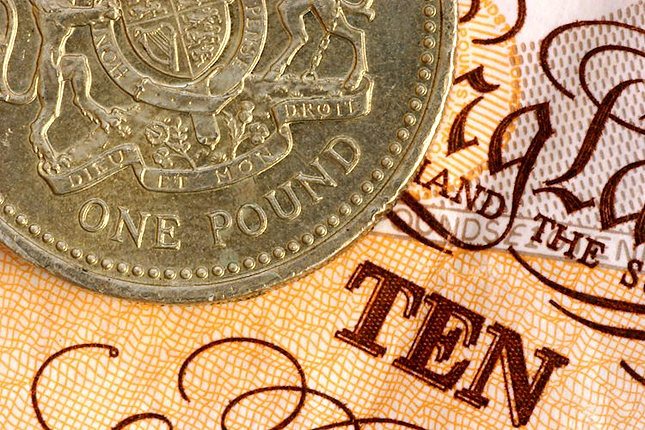- Canadian Dollar slumped 0.65% from the day’s open after US Retail Sales beat the market.
- Canada CPI inflation missed expectations, but Loonie traders are shrugging off the miss as the US Dollar recedes across the board.
- Crude Oil spot prices are dipping for Tuesday, hobbling excess gains for the CAD.
The Canadian Dollar (CAD) went V-shaped after markets saw a large run-up in the US Dollar (USD) ahead of Tuesday’s US Retail Sales reading, and a beat on the expected figure is seeing broad-market sentiment improving, sending the USD lower across the board, with the CAD shrugging off a miss for Canadian Consumer Price Index (CPI) figures.
Canada CPI inflation came in below expectations, but the Loonie is getting bolstered back into the day’s opening prices as investors pull out of the Greenback in a risk appetite bid. Crude Oil prices are also on the low side for Tuesday, pulling support out from beneath the CAD and constraining additional gains for the day.
Daily Digest Market Movers: Canadian Dollar plunges then recovers as markets corkscrew
- The USD/CAD spiked past 1.3700 in the runup to the US Retail Sales/Canada CPI data double-header.
- A solid beat for US Retail Sales on Tuesday, with the headline figure for September coming in at 0.7%, well above the forecast 0.3% and the previous figure getting revised from 0.6% to 0.8%.
- Canadian CPI inflation missed the mark, printing at 3.8% for the annualized period into September, under the 4% forecast-steady reading.
- A solid beat for US Retail Sales sent risk-hungry investors piling out of the USD and into riskier assets, sending the Greenback down across the board.
- USD/CAD recovered the day’s bids back towards the 1.3600 handle before settling back into 1.3650.
- A miss for Canadian CPI inflation is capping off Loonie gains against the Greenback.
- Crude Oil prices are also seeing downside pressure for Tuesday, limiting CAD upside momentum.
- CAD traders will be looking ahead to Friday’s Canadian Retail Sales to make up ground.
- Crude Oil getting knocked around on Tuesday, WTI pinned to $85
Technical Analysis: Canadian Dollar rebounds from pre-US Retail Sales runup, USD/CAD looking to reclaim 1.3660
The USD/CAD spiked to a seven-month high in the early Tuesday session, before dropping back into Monday’s trading range after markets turned broadly risk-on, taking the pair back towards 1.3620, and intraday action is now tussling with the 50-hour Simple Moving Average (SMA) near 1.3635. As Tuesday trading develops, the Canadian Dollar is seeing a refreshed push back into familiar levels near 1.3650.
Tuesday’s spike-and-tumble for the USD/CAD leaves the pair constrained in near-term levels on the daily candlesticks, with technical support coming from the 50-day SMA near 1.3575, while last week’s swing high into the 1.3700 handle represents the figure to beat for USD/CAD bidders.
Canadian Dollar price today
The table below shows the percentage change of Canadian Dollar (CAD) against listed major currencies today. Canadian Dollar was the weakest against the Australian Dollar.
| USD | EUR | GBP | CAD | AUD | JPY | NZD | CHF | |
| USD | -0.21% | 0.21% | 0.23% | -0.45% | 0.13% | 0.07% | -0.02% | |
| EUR | 0.21% | 0.44% | 0.45% | -0.24% | 0.34% | 0.29% | 0.19% | |
| GBP | -0.22% | -0.44% | 0.01% | -0.66% | -0.09% | -0.14% | -0.25% | |
| CAD | -0.25% | -0.46% | -0.02% | -0.70% | -0.12% | -0.17% | -0.28% | |
| AUD | 0.44% | 0.22% | 0.66% | 0.67% | 0.57% | 0.52% | 0.41% | |
| JPY | -0.13% | -0.35% | 0.09% | 0.11% | -0.57% | -0.05% | -0.16% | |
| NZD | -0.07% | -0.29% | 0.16% | 0.15% | -0.52% | 0.06% | -0.10% | |
| CHF | 0.02% | -0.19% | 0.25% | 0.26% | -0.43% | 0.16% | 0.11% |
The heat map shows percentage changes of major currencies against each other. The base currency is picked from the left column, while the quote currency is picked from the top row. For example, if you pick the Euro from the left column and move along the horizontal line to the Japanese Yen, the percentage change displayed in the box will represent EUR (base)/JPY (quote).
Canadian Dollar FAQs
What key factors drive the Canadian Dollar?
The key factors driving the Canadian Dollar (CAD) are the level of interest rates set by the Bank of Canada (BoC), the price of Oil, Canada’s largest export, the health of its economy, inflation and the Trade Balance, which is the difference between the value of Canada’s exports versus its imports. Other factors include market sentiment – whether investors are taking on more risky assets (risk-on) or seeking safe-havens (risk-off) – with risk-on being CAD-positive. As its largest trading partner, the health of the US economy is also a key factor influencing the Canadian Dollar.
How do the decisions of the Bank of Canada impact the Canadian Dollar?
The Bank of Canada (BoC) has a significant influence on the Canadian Dollar by setting the level of interest rates that banks can lend to one another. This influences the level of interest rates for everyone. The main goal of the BoC is to maintain inflation at 1-3% by adjusting interest rates up or down. Relatively higher interest rates tend to be positive for the CAD. The Bank of Canada can also use quantitative easing and tightening to influence credit conditions, with the former CAD-negative and the latter CAD-positive.
How does the price of Oil impact the Canadian Dollar?
The price of Oil is a key factor impacting the value of the Canadian Dollar. Petroleum is Canada’s biggest export, so Oil price tends to have an immediate impact on the CAD value. Generally, if Oil price rises CAD also goes up, as aggregate demand for the currency increases. The opposite is the case if the price of Oil falls. Higher Oil prices also tend to result in a greater likelihood of a positive Trade Balance, which is also supportive of the CAD.
How does inflation data impact the value of the Canadian Dollar?
While inflation had always traditionally been thought of as a negative factor for a currency since it lowers the value of money, the opposite has actually been the case in modern times with the relaxation of cross-border capital controls. Higher inflation tends to lead central banks to put up interest rates which attracts more capital inflows from global investors seeking a lucrative place to keep their money. This increases demand for the local currency, which in Canada’s case is the Canadian Dollar.
How does economic data influence the value of the Canadian Dollar?
Macroeconomic data releases gauge the health of the economy and can have an impact on the Canadian Dollar. Indicators such as GDP, Manufacturing and Services PMIs, employment, and consumer sentiment surveys can all influence the direction of the CAD. A strong economy is good for the Canadian Dollar. Not only does it attract more foreign investment but it may encourage the Bank of Canada to put up interest rates, leading to a stronger currency. If economic data is weak, however, the CAD is likely to fall.
Information on these pages contains forward-looking statements that involve risks and uncertainties. Markets and instruments profiled on this page are for informational purposes only and should not in any way come across as a recommendation to buy or sell in these assets. You should do your own thorough research before making any investment decisions. FXStreet does not in any way guarantee that this information is free from mistakes, errors, or material misstatements. It also does not guarantee that this information is of a timely nature. Investing in Open Markets involves a great deal of risk, including the loss of all or a portion of your investment, as well as emotional distress. All risks, losses and costs associated with investing, including total loss of principal, are your responsibility. The views and opinions expressed in this article are those of the authors and do not necessarily reflect the official policy or position of FXStreet nor its advertisers. The author will not be held responsible for information that is found at the end of links posted on this page.
If not otherwise explicitly mentioned in the body of the article, at the time of writing, the author has no position in any stock mentioned in this article and no business relationship with any company mentioned. The author has not received compensation for writing this article, other than from FXStreet.
FXStreet and the author do not provide personalized recommendations. The author makes no representations as to the accuracy, completeness, or suitability of this information. FXStreet and the author will not be liable for any errors, omissions or any losses, injuries or damages arising from this information and its display or use. Errors and omissions excepted.
The author and FXStreet are not registered investment advisors and nothing in this article is intended to be investment advice.
Recommended content
Editors’ Picks

EUR/USD retreats from tops post-US PCE, back near 1.0540
The bearish sentiment in the US Dollar remains in place and supports EUR/USD's constructive outlook, keeping it in the 1.0540 region after the release of US inflation data, as measured by the PCE, on Wednesday.

GBP/USD recedes to 1.2640 on US PCE data
GBP/USD remains positively oriented in the 1.2640 zone as the Greenback experiences a marked pullback following the PCE inflation release.

Gold remains sidelined near $2,640 following US inflation prints
Gold remains on the positive foot near $2,640 per troy ounce, as US inflation data matched initial estimates in October, while US yields display a negative performance across the curve.

The clock is ticking for France
A French political problem is turning into a problem for financial markets. The budget deficit in France is 6% of GDP, if the planned reforms are not enacted, then the deficit could rise to 7% of GDP next year. This is the level when bond vigilantes start to sniff around.

Eurozone PMI sounds the alarm about growth once more
The composite PMI dropped from 50 to 48.1, once more stressing growth concerns for the eurozone. Hard data has actually come in better than expected recently – so ahead of the December meeting, the ECB has to figure out whether this is the PMI crying wolf or whether it should take this signal seriously. We think it’s the latter.

Best Forex Brokers with Low Spreads
VERIFIED Low spreads are crucial for reducing trading costs. Explore top Forex brokers offering competitive spreads and high leverage. Compare options for EUR/USD, GBP/USD, USD/JPY, and Gold.